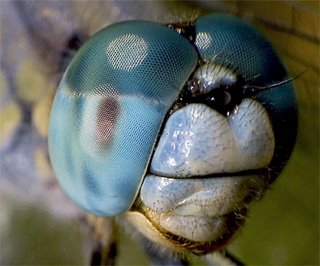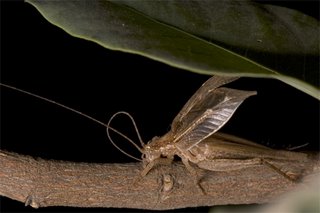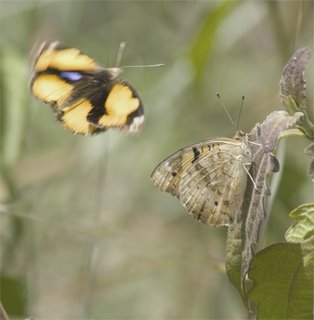The most recent issue in Science, has an
feature on arrays that mimic the hair cells in our ears! Hair cells, ears?
Ok A simple summary: when a pressure wave hits your eardrum, your eardrum transfers its oscillations via three bones (ossicles) to the inner ear. The inner ears roughly a long coiled up tube which is full of water and on the inside of which there are hair cells. When the compression waves are transferred to the water, this causes stereocilia on the hair cells to move. The movement dislocates the stereocilia, and the forces generated by this movement break thin single protein filaments that hold a channel closed, opening the channel. Its a way of transducing mechanical energy into a electrical signal. Ions rush about, various upstream things happen, the upshot - we hear.
The basic mechanism remains more or less the same, across ear types, even
insect ears. Its also used by fish, to sense pressure changes in the water using whats called the lateral line. This helps them detect and avoid predators, etc, even stationary objects which would alter water flow patterns.
This multidisciplinary team has made a sensor for detecting flow using this basic idea. Their sensors are fabricated using photolithography, and are about a few hundred micrometers, a hundred times the size of the real thing. I suppose they could go use some new nano technique to make them smaller, (I know squat about any of this tech bit I should add).They are however, said to be 10 times as sensitive. But more noisy, and to combat the noise they're looking back to the biology.

The other recent bio-inspired thingey that I read about, also in a Science
article, was the compound eye. They made a micro lens, a cone, rhabdomere and everything. Its scary to look at the SEM of the fabricated structure, it looks like it could actually be an eye! They've off course already begun working on a thin
camera based on this eye. There are images in that link and all kinds of tech to describe lenses that gets used even for conventional lenses. I dont see any 90 deg FOV images and they still seem a bit noisy. But this is an innovation to keep an eye on!!!
What amazes me about these new technologies is how
direct their inspiration is. They're taking biological solutions almost as is. To suggest a counter-example, look at neural nets, they're an old established method now. They were 'inspired' by neurons, but the actual analogies are only very broad and sketchy...I dont know enough but for just one the connectivities are too high, the neuron in real life has architechture which affects function, which a perceptron/cognitron doesn't. There are different kinds of neurons...etc, etc.
The point being they were sort of like, tried to capture essential features but not details. Both of the above examples seem to capture quite a few details. And I wonder why. I didnt really find the reasons in the original articles themselves. The answer lies somewhere in the mix of size, sensitivity, dynamic range, and structural solutions to computational problems I think. In these cases perhaps the answers are in size and sensitivity.
However structural solutions, I think are a very elegant feature of biological systems. I'll give you an example. Our ear is made in a strange way, the basilar membrane which line the inner canal has different a thickness and stiffness at each point, and this causes it to resonate to different frequencies. Therefore the hair cells on that portion of the basilar membrane respond best to a narrow range of frequencies. There are other processes that sharpen the tuning, but this remains to be seen as the principal source of frequency tuning in the ear. Voila, an Fourier transform using a structure.
Point being, bio-inspired stuff is way cool!








